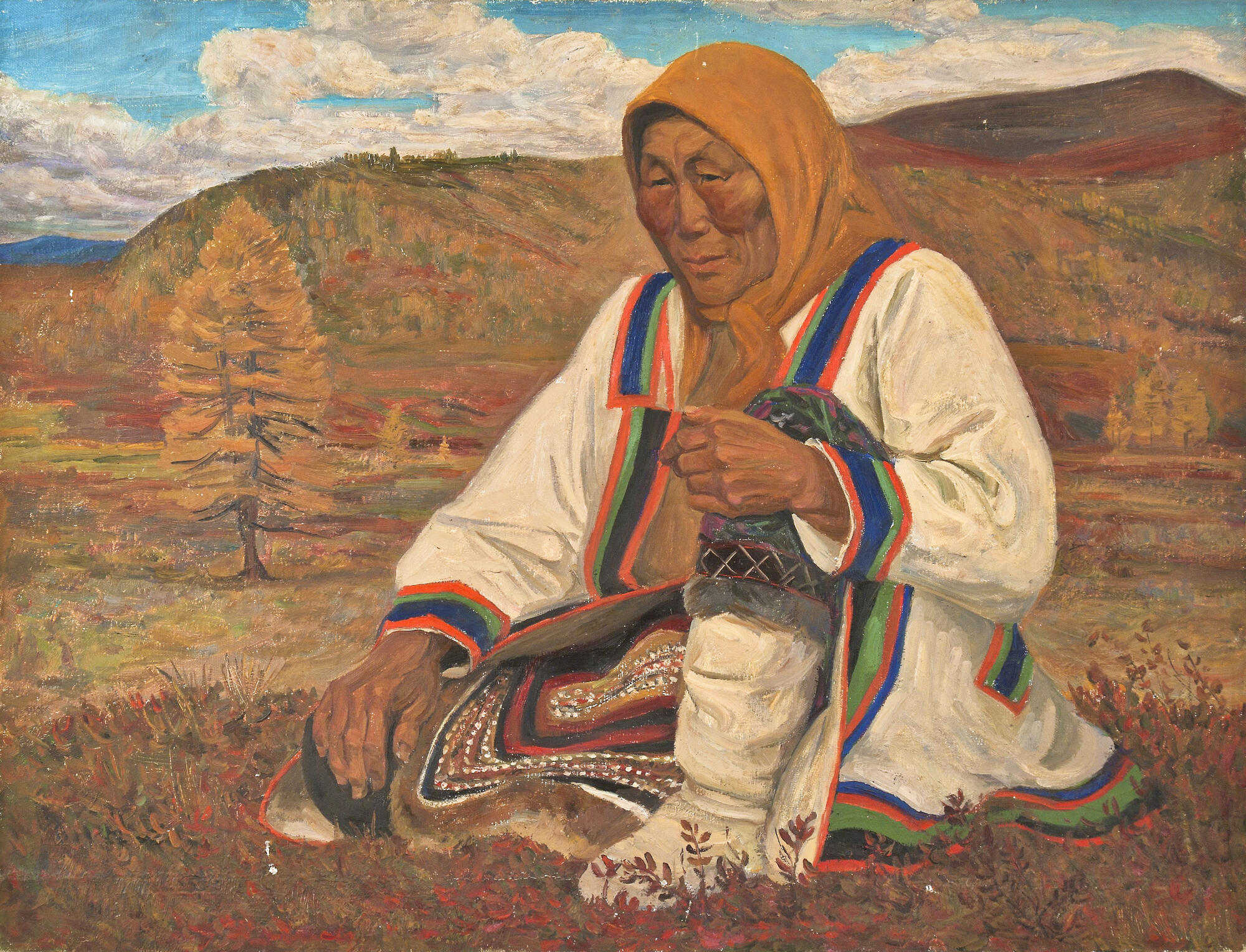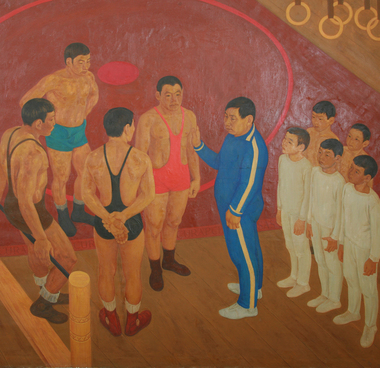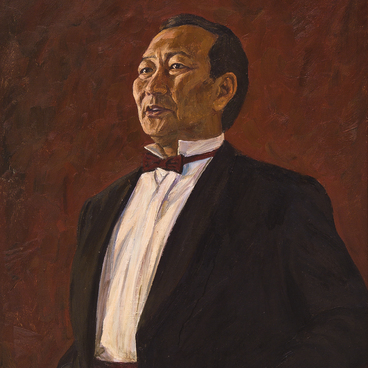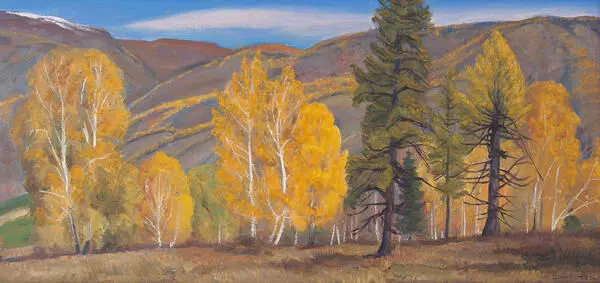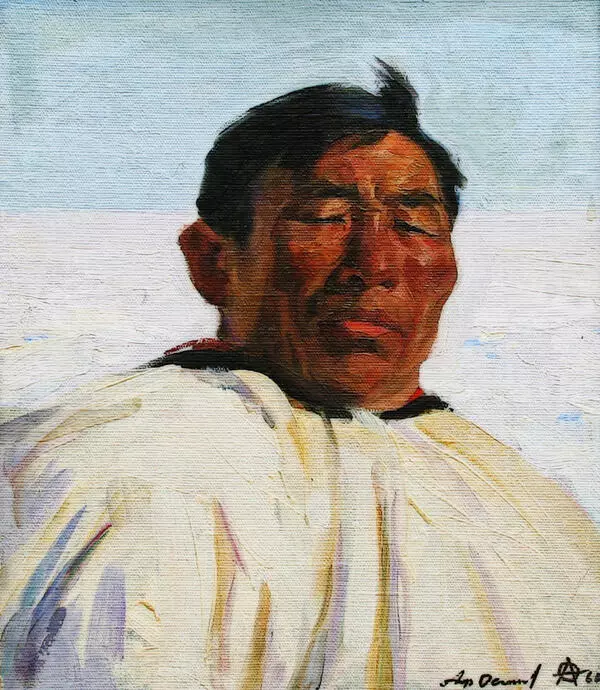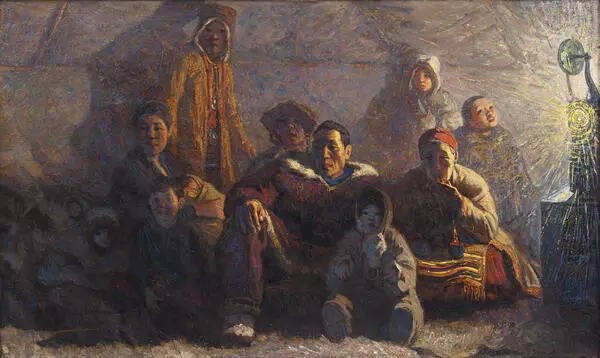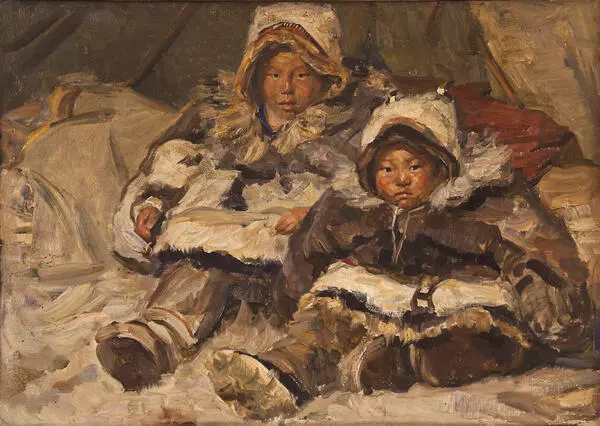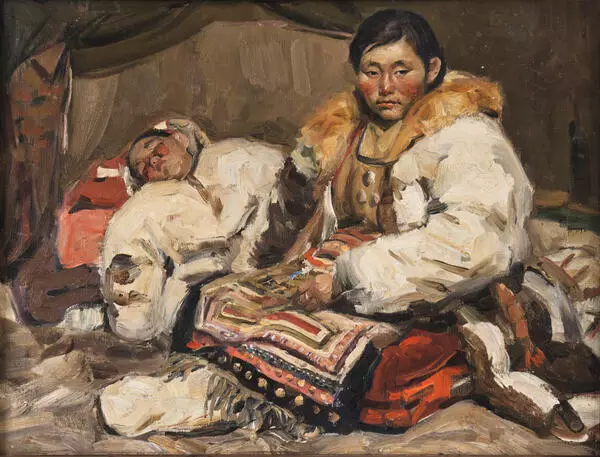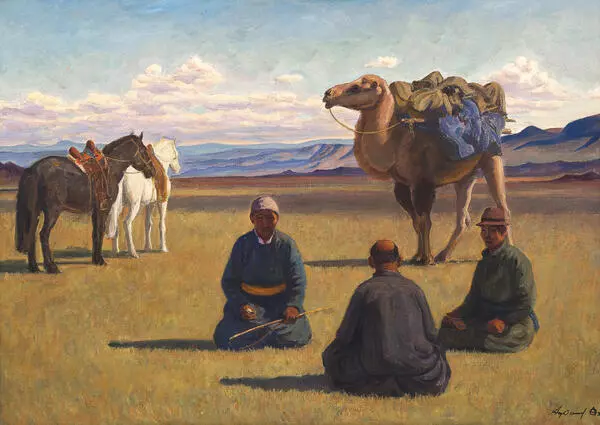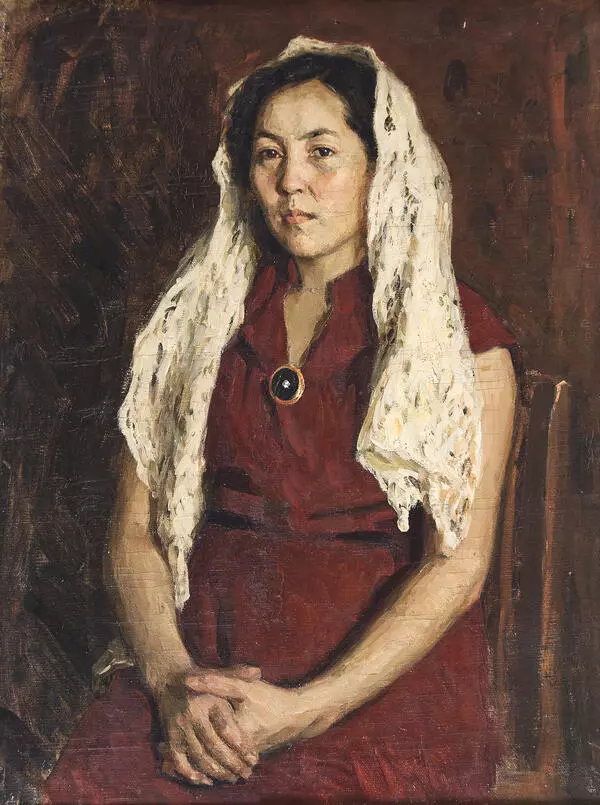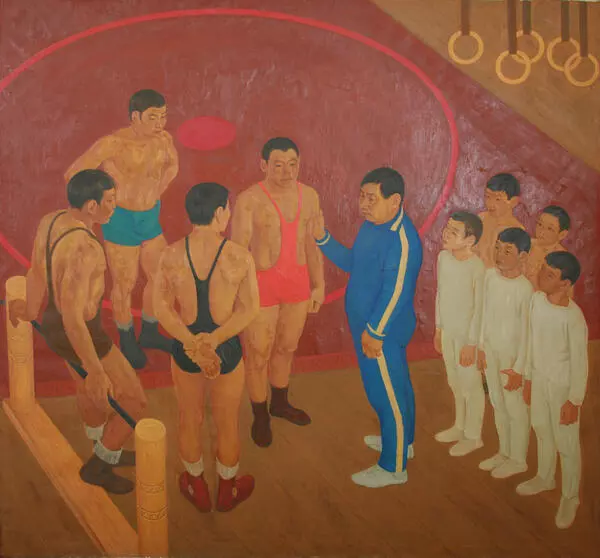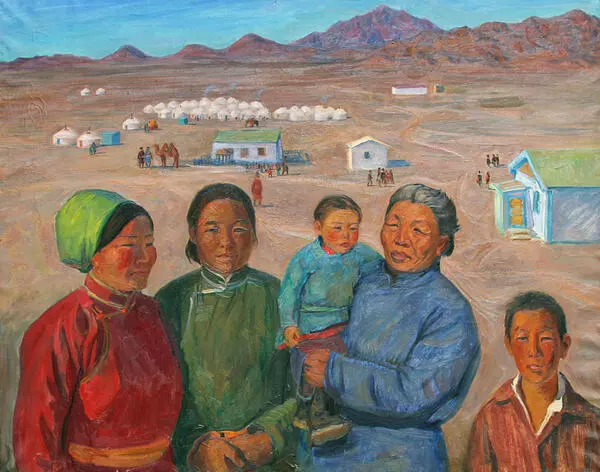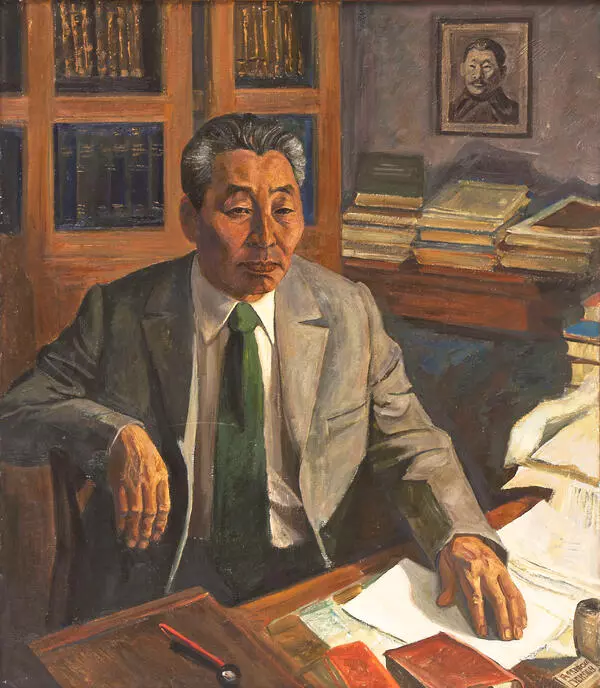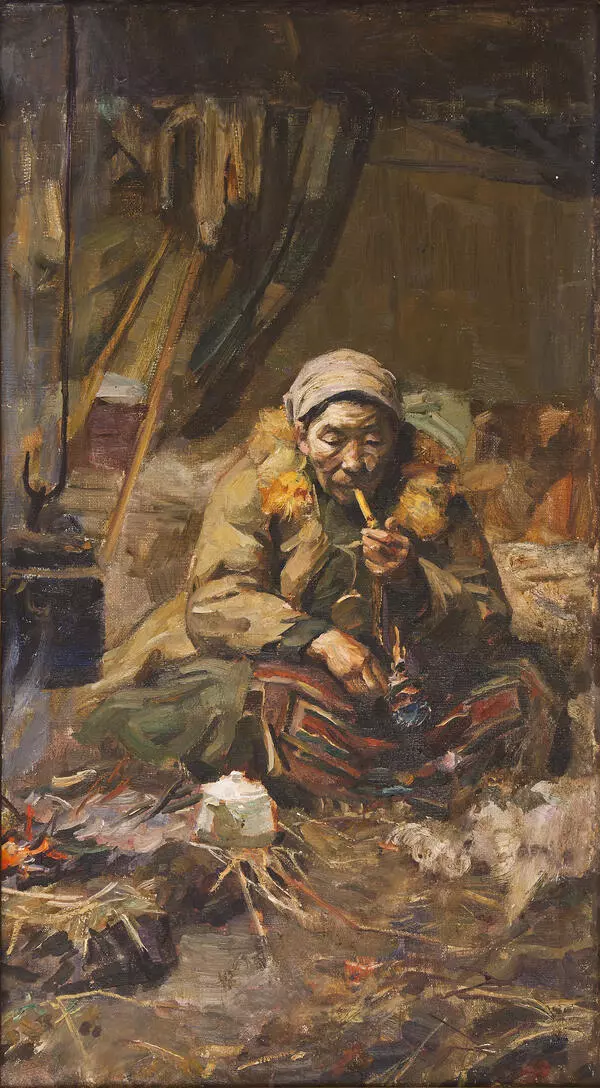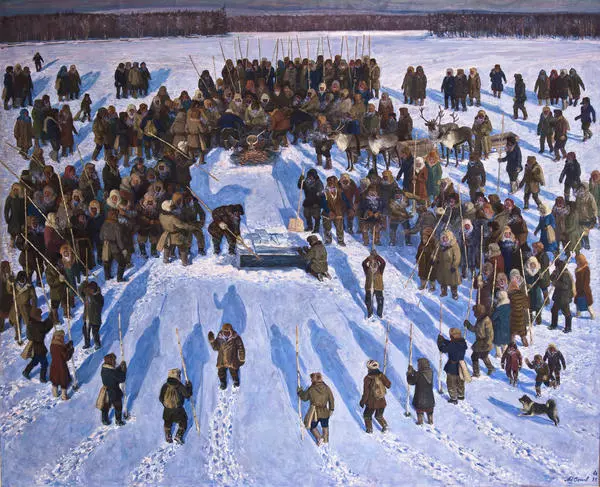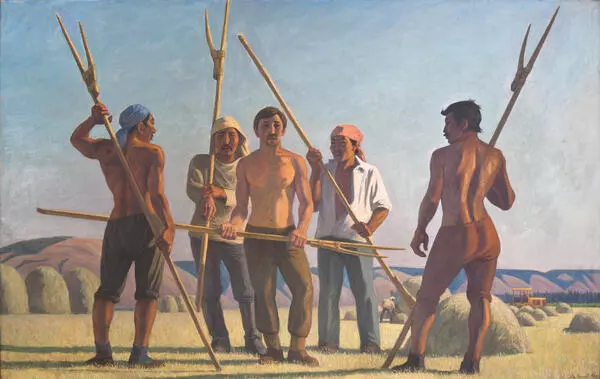The works of the Yakut painter Afanasy Osipov are presented at the National Art Museum of the Republic of Sakha (Yakutia). He was born on February 28, 1928 in Gorny Ulus in Yakutia. After finishing school and technical school, he went to Moscow where he entered the Moscow secondary art school at the Moscow State Academic Art Institute named after V.I. Surikov, and then entered the institute itself. The artist participated in many all-union and foreign exhibitions, became a People’s Artist of the USSR, and the winner of the Ilya Repin State Prize of the RSFSR. His paintings are kept in the State Tretyakov Gallery, the State Russian Museum, and private collections of Russian and abroad.
Osipov first came to the Arctic North in early 1958. Then he visited the coast of the Arctic Ocean. The Northern cycle was one of the first in his work. Individual works of this cycle, including portrait etudes, were seen against the general background of art exhibitions in the country in those years. While being in the tundra for a long time, the artist studied in many ways the traditional way of life of the Northern peoples, touched their original life values, and captured what he saw in his works.
The canvas depicts the legendary Evenk from Ulakhan-Chistaysky Nasleg Darya Dmitrievna Koryakina. She was a well-known reindeer breeder in Yakutia, the Knight of the Order of Lenin, and the owner of the high title “Mother Heroine”. Daria Koryakina and her husband raised 11 children. Since childhood, while wandering through the endless tundra and taiga, she was familiar firsthand with the work of a reindeer herder and knew all the hardships of a nomadic life. As a native speaker and expert in national culture, she passed on to young generations the skills of reindeer husbandry, methods of nomadism and fishing, experience in household management, as well as secrets of sewing and making skins. The artist effectively painted the Evenk clothing. A unique “text” that transmits from generation to generation the experience of the people, aesthetic values, skills and technological skills, and customs. The painting of the canvas is endowed with a sonorous festive flavor. As in other paintings of this period, the artist’s desire to convey optimism and to reveal a bright beginning in any plot is shown here.
Osipov first came to the Arctic North in early 1958. Then he visited the coast of the Arctic Ocean. The Northern cycle was one of the first in his work. Individual works of this cycle, including portrait etudes, were seen against the general background of art exhibitions in the country in those years. While being in the tundra for a long time, the artist studied in many ways the traditional way of life of the Northern peoples, touched their original life values, and captured what he saw in his works.
The canvas depicts the legendary Evenk from Ulakhan-Chistaysky Nasleg Darya Dmitrievna Koryakina. She was a well-known reindeer breeder in Yakutia, the Knight of the Order of Lenin, and the owner of the high title “Mother Heroine”. Daria Koryakina and her husband raised 11 children. Since childhood, while wandering through the endless tundra and taiga, she was familiar firsthand with the work of a reindeer herder and knew all the hardships of a nomadic life. As a native speaker and expert in national culture, she passed on to young generations the skills of reindeer husbandry, methods of nomadism and fishing, experience in household management, as well as secrets of sewing and making skins. The artist effectively painted the Evenk clothing. A unique “text” that transmits from generation to generation the experience of the people, aesthetic values, skills and technological skills, and customs. The painting of the canvas is endowed with a sonorous festive flavor. As in other paintings of this period, the artist’s desire to convey optimism and to reveal a bright beginning in any plot is shown here.
